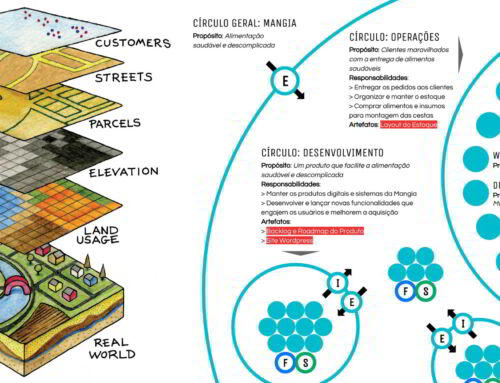A new movement is emerging. They are evolutionary, responsive organizations, free or organic companies. Regardless of how you want to call them, they share some common characteristics, such as evolutionary purpose, transparency, autonomy, wholeness, and self-management. It is for this last one that we will look at today.
Less hierarchy and bosses: more structure and transparency
We understand self-management as the distribution of responsibilities of a traditional manager among various people, roles and processes. The ways you structure this are endless. In Reinventing Organizations, Frederic Laloux describes 3 different types of models he has observed in his research.
When we at Target Teal challenge the chain of command, the hierarchy and the boss, we always come across the following statement: My company has no maturity for this.
Are you sure? Let’s talk about it.
Maturity
Are people ready for self-management? No. I’m not either. We are conditioned by our society and culture to transfer much of our responsibilities to other agents. We have transferred responsibility to the government to take care of health and safety. We transfer to teachers and parents the responsibility of teaching and educating us. We transfer the responsibility to the boss to deal with conflicts and manage our own work.
I’m not ready for self-management. But I’m getting more prepared, because I practice every week in the organizations that I help and within Target Teal. Now if in your organization this never happened, how can you be ready?
In general, we think it takes a great deal of brainpower to deal with the fact that “no one is going to assign tasks to you.” What I have observed – and let us make clear that this is empirical and anecdotal evidence – is that you do not need anything but:
- An organizational structure that enables this, and;
- Time (and practice) for the development of people.
About an Enabling Organizational Structure
Practicing self-management does not simply mean “empowering employees.” Mechanisms that create social pressure – accountability to the group – and hold people accountable for their own impact are needed. And believe me, most organizations that think they’re empowering employees do not have the right frameworks for doing so.
Those who say “people do not have the maturity to do so” greatly underestimate the power of context. When you are in an organization (in a context) that trusts people, gives autonomy, values learning, and encourages experimentation, victimization gives way to protagonism.
About enough time
During the work we do at Target Teal to build these “enabling structures,” we come across the question.
When will self-management work?
Some teams have fast gains in speed and learning. Others take longer. Either way, a self-management implementation process is a long way off. Remember our social and cultural conditioning? It is not easy to get rid of it.
Our beliefs shape our behaviors and create our reality. If you cultivate an environment based on transparency and accountability, people will behave in a transparent and responsible manner.
Will everyone adapt?
No. Some people will not be able to work with self-management, even with mechanisms of transparency and social pressure. But unlike traditional management, where an individual with problems can be “hidden”, self-management structures place these difficulties in evidence.
The sentence “people do not have maturity for this” is a myth. When we say it, we strongly underestimate the power of context. If you configure the environment correctly, new behaviors will appear.
Managers who utter “my team does not have the maturity to do so” strengthen the status quo. Leaders who create self-management structures drive change. Which one do you want to be?






[…] A final word about the myth of maturity (click here to see what we have already said about it): […]
[…] Self-management is the best, if not the only way for a team to mature and become ready for self-management. If you keep treating your team like irresponsible children or teenagers, so-called maturity will never take effect. Read this post that explains in more detail our position on the subject. […]